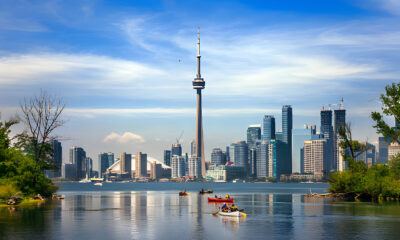Relocate Abroad
From Visa Application to Settlement: Your Path to Canada
By
Canada is a top destination for immigrants seeking new opportunities. Whether for work, study, or to settle permanently, the process may seem complex but can be navigated with the right steps. This guide will help you understand the journey from visa application to settling down in Canada.
1. Understanding Canada’s Immigration Programs
Canada offers various immigration programs, each designed for different purposes. Whether you’re looking to immigrate for work, study, or permanent residency, it’s crucial to understand which program best suits your needs.
Express Entry System
The Express Entry system is the fastest route to permanent residency for skilled workers. The system evaluates candidates based on a Comprehensive Ranking System (CRS) score, considering factors like age, work experience, education, and language proficiency.
Provincial Nominee Program (PNP)
If you have a specific province in mind, the Provincial Nominee Program (PNP) allows provinces to nominate candidates who meet their economic and labor needs. This can speed up your visa approval process.
Family Sponsorship
For those with relatives in Canada, the Family Sponsorship program enables Canadian citizens and permanent residents to sponsor family members, helping them to reunite with their loved ones.
2. The Visa Application Process
Applying for a visa to Canada can be streamlined if you follow the correct steps.
Determine Eligibility
Before you apply, check if you’re eligible for the visa category you want. You can use online tools provided by Immigration, Refugees, and Citizenship Canada (IRCC) to assess your eligibility.
Gather Required Documents
The documentation you need depends on the type of visa you’re applying for. Common documents include proof of identity, educational certificates, proof of funds, and medical examination reports.
Submit Your Application
Once your documents are ready, you can submit your application online. Make sure all forms are filled out correctly to avoid delays.
Pay the Fees
Visa applications come with associated fees, which vary based on the type of visa. Be prepared to pay these fees at the time of submission.
Wait for Processing
After submission, your application will go through a processing period, which can vary depending on the visa type and your home country. You may be asked to attend an interview or submit additional documents.
3. Preparing for Arrival in Canada
Once your visa is approved, you need to make preparations for your arrival.
Financial Planning
Ensure you have sufficient funds to cover initial living costs, as required by Canadian immigration authorities. These funds will help you settle comfortably before finding a job or getting established.
Accommodation
Find temporary accommodation for when you first arrive. It’s easier to find a permanent residence once you’re physically in Canada.
Flight and Travel Arrangements
Book your flight and ensure you have all necessary travel documents. If you’re traveling with family, make sure everyone’s documentation is in order.
Health Insurance
Canada’s healthcare system is publicly funded, but newcomers may need private health insurance until they qualify for provincial coverage.
4. Settling in Canada
After arriving, your focus will shift to settling in.
Finding Employment
If you arrived as a skilled worker, begin your job search immediately. Use online job boards and networking events to increase your chances of finding employment. It’s also helpful to get your educational and professional credentials assessed to ensure they’re recognized in Canada.
Registering for Health Care
Once you’ve settled in a province, you need to apply for provincial health care coverage. The process varies from province to province, so make sure to check the specific requirements.
Obtaining a Social Insurance Number (SIN)
To work in Canada, you’ll need a Social Insurance Number (SIN). Apply for it soon after you arrive to be able to work legally.
Cultural Integration
Canada is a multicultural country, but adapting to a new culture can still be challenging. Engage with local communities, attend cultural events, and connect with fellow immigrants to ease the transition.
5. Path to Permanent Residency and Citizenship
Many newcomers to Canada aspire to become permanent residents or citizens.
Permanent Residency
After living in Canada for a certain period, you can apply for permanent residency. PR status gives you most of the rights of Canadian citizens, including access to social services and healthcare.
Citizenship
After becoming a permanent resident and meeting specific requirements, you may apply for Canadian citizenship. This allows you to vote and obtain a Canadian passport.
Conclusion
Immigrating to Canada is a rewarding journey, but it requires careful planning and preparation. By understanding the visa process, making necessary arrangements before you arrive, and taking steps to integrate into Canadian society, you can successfully transition from a visa applicant to a fully settled resident of Canada.











